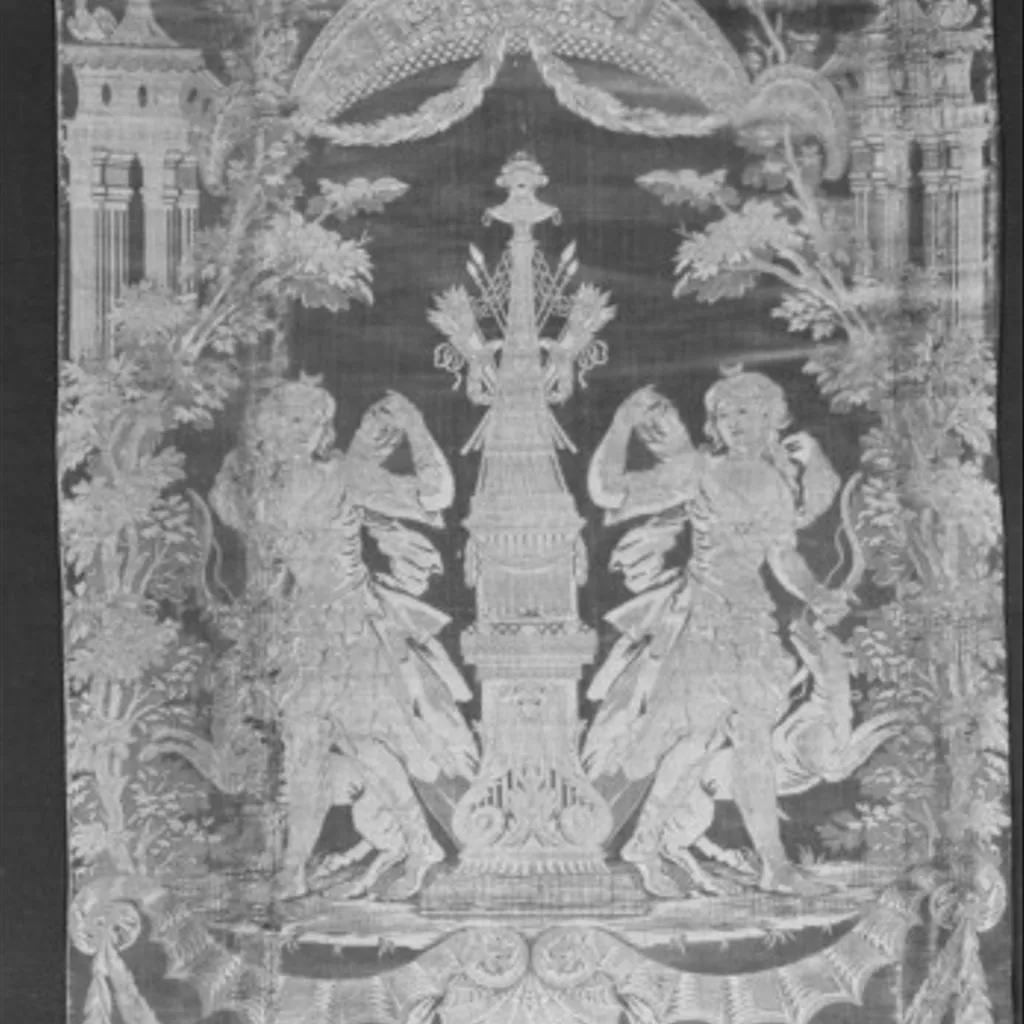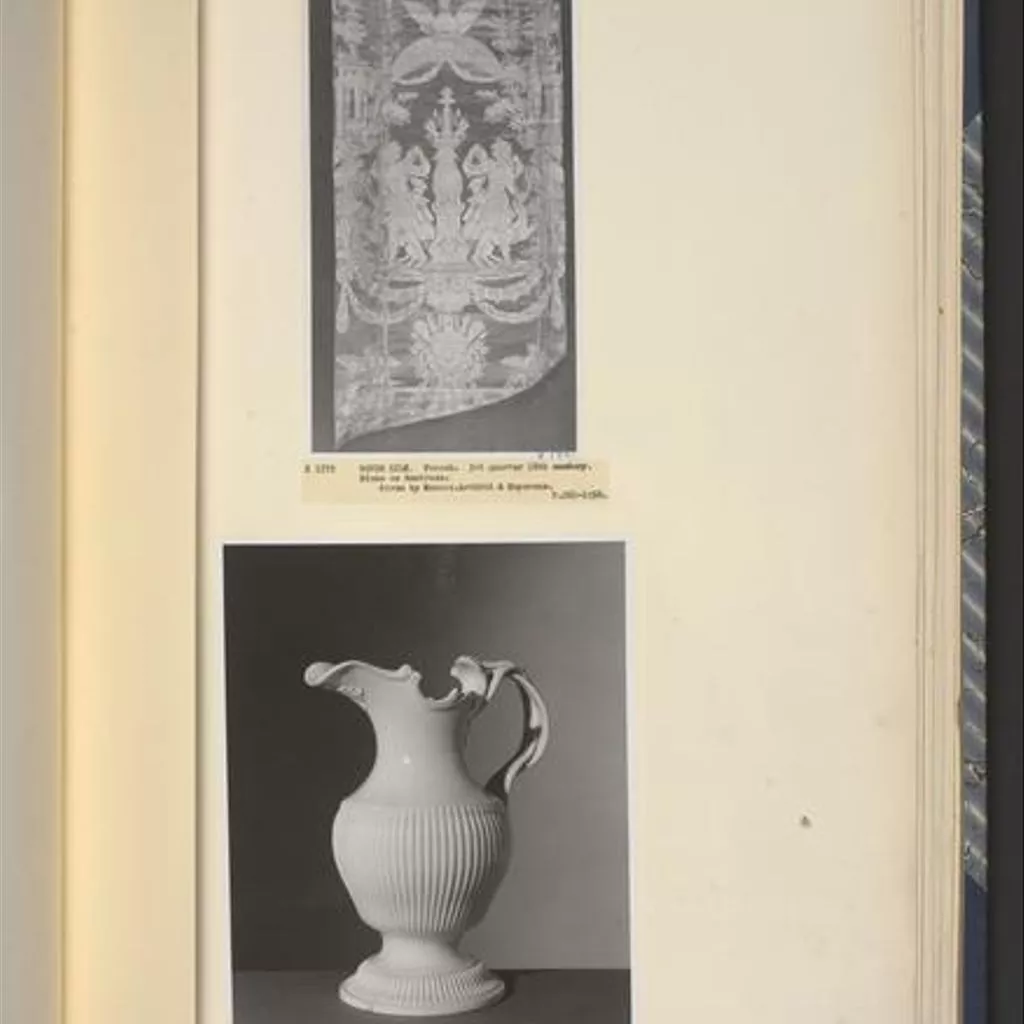Description
Limited edition
This fragment of blue silk with a silver pattern may have been part of the last order for furnishing textiles made by the administrator of the Crown Furniture Repository (Gardemeuble) in France in 1791. He requested 300 ells (approximately 400 yards) of fabric for Queen Marie Antoinette's apartments at the palace of Saint Cloud. The silk was originally intended for upholstery and wall hangings, and was called a 'blue and silver damask lampas' in the contemporary documents. The order was delivered in April 1792, just a few months before Marie Antoinette was guillotined. The entire quantity of the fabric was used by the Revolutionary government in 1796 to pay off a national debt to Greek merchants who may have considered melting down the silver to change it into currency.
The pattern was composed of three subjects: children, vases and cupids; animals at rest; and the departure of Diana (goddess of hunting). The border was to be made up of caryatides with a brownish ground. Camille Pernon, the most prominent of silk manufacturers in Lyon, manufactured the fabric which was to cost about 50 livres per ell. By the time of the order's delivery, inflation had raised the cost to over 76 livres per ell. The total was extremely extravagant; at that time a master weaver in Lyon might earn about 1,800 livres per year and the lowliest employee in the silk industry earned only 200 livres per year.
Woven silk fragment, brocaded in silver on a blue ground, French, ca. 1792
Fragment of woven silk damask in pale blue and silver, showing part of a longer repeat pattern. The pattern is a point repeat (i.e. symmetrical about a vertical axis). In the centre stands an obelisk decked with arrows, spears and garlands; from this central motif the goddess Diana departs for the hunt; she is framed by a tree, a classical temple with an urn above it, an archway with swags and an eagle perched above; below the figure of Diana are doves, and above the eagle is a crest of feathers; in the top left hand corner, is a figure half man and half plant. The textile is unevenly shaped and sewn on to a backing cloth; the selvedges are turned in.
The fabric is a tissue with a satin ground and two pattern wefts, one of white silk and one of silver thread. The white silk is bound in plain weave on the face of the textile, the silver thread (on a white core) is unbound on the face of the textile but bound in plain on the back. For some details the two threads are used together in order to make a third effect. The selvedge has two cords of rust-pink silk and all the wefts in a pass working together in plain weave.











